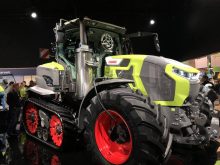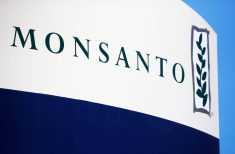af contributor |grande prairie
Peace country grain producers are watching with keen interest as a proposal for a new $59-million integrated rail/ truck container depot picks up steam in the County of Grande Prairie.
Project consultant Greg Pichette said construction of the first phase of the Inland Multi-Modal Logistics Park could start as early as this fall. The site will receive, handle and ship domestic and export commodities from the region. It will be a rail/truck container facility, with materials handling and warehouse and distribution capabilities.
Read Also

Grazing ‘sweet spot’ boosts pasture performance
Timing-focused approach to pasture management touted to boost forage growth, livestock gains while also cutting farmer labour and inputs
The initiative took a huge step forward last fall when the province of Alberta dedicated land at the junctions of Highway 2 and Highway 43 north of Grande Prairie. Pichette said the site is perfect for such a facility. “It’s ideal, with rail access and the highway infrastructure in place and in close proximity to the main railway operating yard in Grande Prairie.”
Locating the facility here will build on recent improvements that have been made to area infrastructure over the past few years, such as an overpass and twinned highways.
Pichette said the County of Grande Prairie is working with Western Economic Diversification(WED) for a matching grant. “We’ve been working through the process with WED, the application for funding has been reviewed and WED has assigned a project officer,” he said. “We’ll be meeting with WED in the next few days to answer some of their questions.”
Cost of the first phase is estimated at between $28 million and $38 million. It will have two production rail tracks, a switching/runaround track, off-track equipment facilities and a small office. Phase 2 will bring the project to approximately $59 million, said Pichette. Construction could start as early as this fall.
Reduced transportation costs for Peace region producers as well as its potential to attract prospective new industry are the hallmarks of the facility.
IP capability
“We see the agricultural community as a large player in the ongoing operations of this project,” Pichette said. Citing increased need for identity preservation, he said the facility will be of assistance to grain producers by providing the opportunity to protect product quality and the need to identify origin right down to the farm it came from.
Currently, grain producers have limited options, Pichette said. “Producers can go through large elevator production houses where product may be integrated with that from other producers, thereby diluting a farm-specific place of origin,” he said. “Farmers are finding it harder and harder to secure producer cars and don’t have many alternatives other than shipping product by truck all the way to port.”
Emergence of concepts such as the multi-modal facility is part of an ongoing evolution in grain handling, Pichette said.
“This facility isn’t looking to compete with the Viterras of the world, but offers an option for grain producers in terms of handling their own products.”














